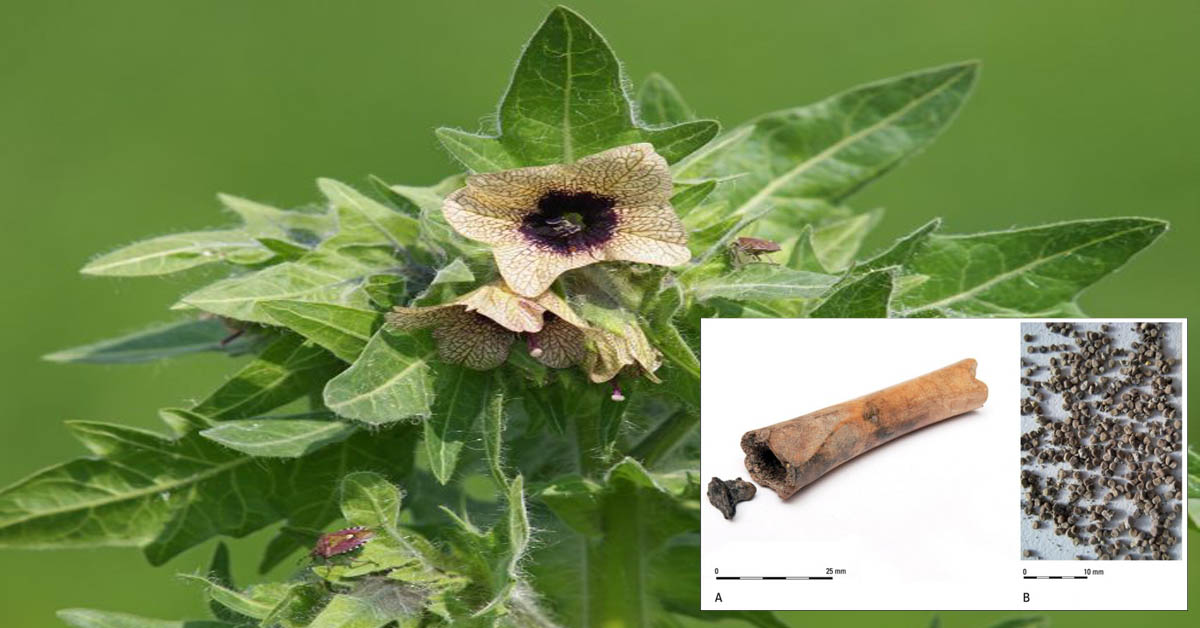Ancient Romans Used The Poisonous Black Henbane Plant As Hallucinogenic Medicine
A hollowed-out bone containing hundreds of black henbane seeds has been discovered in a Roman settlement in the Netherlands, indicating that the poisonous plant was used intentionally by citizens of the ancient empire.

Known for its maddening effects, the species is mentioned in classical sources as both a poison and a medicine, so it’s unclear exactly what these seeds were used for.
A member of the nightshade family, henbane is described by Roman author and botanist Pliny the Elder as a dangerous plant that causes insanity but which may also have therapeutic properties.
For instance, in his famous text Naturalis Historia, Pliny writes that henbane seeds infused in asses’ milk and mead might help to treat flatulence, while other parts of the plant can be used to alleviate everything from toothache to pains of the womb.
However, because the plant occurs naturally around cultivated fields, the presence of henbane in archaeological sites can’t easily be interpreted as evidence for deliberate use.
Until now, the only clear examples of henbane utilization came from two medieval hospitals in Scotland and Finland, and a Viking-era grave in Denmark belonging to a woman who is thought to have been a type of sorcerer known as a vølva.
In the latter case, black henbane seeds were found next to a metal wand alongside the seeress’ remains, suggesting that the plant was used for hallucinatory purposes. Medieval texts also mention henbane as an ingredient in witches’ potions due to its delusory properties.
In the Roman world, though, no conclusive evidence for the use of henbane had ever been identified prior to the discovery of the hollowed bone.
Unearthed in 2017 at the ancient settlement of Houten-Castellum, the bone – which belonged to a sheep or goat – has been dated to between 70 and 100 CE.
Containing around 1,000 black henbane seeds, the bone was plugged at one end with birch pitch, suggesting that it was purposefully crafted as a receptacle for the seeds.
“The find is unique and provides unmistakable proof for the intentional use of black henbane seeds in the Roman Netherlands”, said archaeologist Dr Maaike Groot from Freie Universität Berlin in a statement seen by ArchaeologyWorldNews.
The author of a new study about the discovery, Groot told ArchaeologyWorldNews that it’s unclear if the seeds were employed as a medicine or a poison, “but because we have classical sources describing the medicinal use of henbane, that’s probably more likely.”
“I think it was probably used as some kind of medicine, but we can’t really say what for,” she said.
Groot also notes the significance of finding henbane seeds “on the edge of the empire”, far from the Roman heartland where the likes of Pliny would have lived. “What’s exciting is that we’re here in an Indigenous settlement of normal farmers who were tied into this Roman world,” she remarked.

More specifically, the settlement of Houten-Castellum was occupied by a Germanic tribe known as the Batavians, who were close military allies of the Romans. “The Batavians had to supply troops instead of paying normal taxes, so every family would have had someone serving in the Roman army,” explained Groot.
“Very often these people would come back after 25 years traveling around the empire, and they’d bring back all this knowledge. So even though [Houten-Castellum] is in the back of beyond, there are still ties to the Roman world.”
Whether or not the medicinal use of henbane was introduced to the Netherlands by a returning Batavian soldier is something that, at this stage, we can only speculate about.
The study is published in the journal Antiquity.




